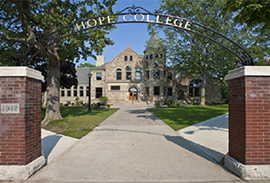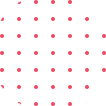World
Class Instructor
1:1 with
Industry Expert
400+
Global Hiring
55%
Avg. Salary Hike
- Overview
- Course Details
- Syllabus
- FAQ
Acquire Key hardware and network Skills: Master hardware and network systems, Earn Certification, Launch Your Dev Career!
Elysium Academy has established itself as a leader in IT education, offering a comprehensive program that equips participants with the skills to manage, troubleshoot, and optimize hardware and network systems. Elysium Academy delivers an all-encompassing course that ensures participants are prepared to handle IT challenges with expertise.
2.2
Version
90 Hours
Duration
20 Hours
Theory
70 Hours
Practical
Version
2.2
Duration
65 Hours
Theory
12 Hours
Practical
65 Hours
- Industry Based Projects
- Personalized coordinator.
- Trainer feedback.
- Trainer availability post sessions.
- Get your staff certified.
- Certificate from governing bodies.
- Recognized worldwide
- Hands on assignment
- Master hardware fundamentals, including components, assembly, and troubleshooting techniques.
- Dive into advanced networking concepts, protocols, and best practices.
- Gain proficiency in network infrastructure essentials and network security.
- Practice real-world scenarios with hands-on labs and simulations.
- Prepare thoroughly for CompTIA A+ and Network+ certification exams.
- Learn from experienced instructors with industry expertise.
Top companies offer this course to their employees
Course was selected for our collection of top-rated courses trusted by businesses worldwide.


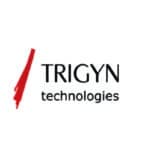
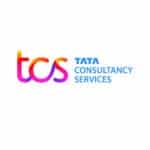
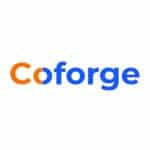
Salary
PER ANNUM
₹ 5.5 L
Job Growth
Current Month
23%
Offer Jobs
2026
7,000+
The CompTIA Hardware A+ & Network+ (N10-008) program offers learners the opportunity to master the essential skills needed for IT hardware and networking. Begin your journey in the IT field and learn hardware, networking, and security with the guidance of experienced instructors. Learners will emerge prepared to tackle real-world IT infrastructure problems. Here are some of the skills you will need to excel in IT support and network administration.
The CompTIA Hardware A+ & Network+ course teaches you to master the concepts of IT hardware and networking. Through this training, you will learn Hardware Installation, Network Configuration, Network Security, Troubleshooting, and System Maintenance.
- IT hardware expertise forms the foundation of effective system management.
- Networking is the backbone of communication in modern organizations.
- Data scrubbing and system maintenance ensure efficient and reliable IT operations.
- IT professionals interpret network data to enhance performance and security.
- Networking skills support the infrastructure on which advanced IT solutions are built.

Our Training Program Benefits
- Live, interactive training by experts.
- Curriculum that focuses on the learner.
- Challenge-based, hands-on project.
- Opportunities for team building.
- Cost- saving training.
- Convenient for your employees.
- Completely tailor-made curriculum.
Chapter-1 Install and Configure Laptop Hardware
Install and Configure Laptop Hardware
- Hardware/device Replacement
- Battery
- Keyboard/keys
- Random-access memory (RAM)
- Hard disk drive (HDD)/solid state drive (SSD) migration
- HDD/SSD replacement
- Wireless cards
- Physical Privacy and Security Components
- Biometrics
- Near-field scanner features
Display Components of Mobile Device Types
- Liquid crystal display (LCD)
- In-plane switching (IPS)
- Twisted nematic (TN)
- Vertical alignment (VA)
- Organic light-emitting diode (OLED)
- Mobile display components
- WiFi antenna connector/placement
- Camera/webcam
- Microphone
- Touch screen/digitizer
- Inverter
Chapter-2 Configure Accessories
Configure Accessories
- Connection methods
- Universal Serial Bus (USB)/USB-C/microUSB/miniUSB
- Lightning
- Serial interfaces
- Near-field communication (NFC)
- Bluetooth
- Hotspot
Accessories
- Touch pens
- Headsets
- Speakers
- Webcam
- Docking station
- Port replicator
- Trackpad/drawing pad
Chapter-3 Mobile-Device Network Connectivity
- Wireless/cellular data network (enable/disable)
- 2G/3G/4G/5G
- Hotspot
- Global System for Mobile Communications (GSM) vs. code-division multiple access (CDMA)
- Preferred Roaming List (PRL) updates
- Global Positioning System (GPS) services
- Cellular location services
- Corporate email configuration
- Two-factor authentication
- Corporate applications
- Mobile Device Synchronization
- Account setup
- Microsoft 365
- Google Workspace
- iCloud
- Data to synchronize
- Photos
- Calendar
- Contacts
- Recognizing data caps
Chapter-4 Ports and protocols
- 20/21 – File Transfer Protocol (FTP)
- 22 – Secure Shell (SSH)
- 23 – Telnet
- 25 – Simple Mail Transfer Protocol (SMTP)
- 53 – Domain Name System (DNS)
- 67/68 – Dynamic Host Configuration Protocol (DHCP)
- 80 – Hypertext Transfer Protocol (HTTP)
- 110 – Post Office Protocol 3 (POP3)
- 137/139 – Network Basic Input/Output System (NetBIOS)/NetBIOS over TCP/IP (NetBT)
- 143 – Internet Mail Access Protocol (IMAP)
- 161/162 – Simple Network Management Protocol (SNMP)
- 389 – Lightweight Directory Access Protocol (LDAP)
- 443 – Hypertext Transfer Protocol Secure (HTTPS)
- 445 – Server Message Block (SMB)/Common Internet File System (CIFS)
- 3389 – Remote Desktop Protocol (RDP)
- Connectionless
- DHCP
- Trivial File Transfer Protocol (TFTP)
- Connection-oriented
- HTTPS
- SSH
Chapter-5 Common Networking Hardware
- Routers
- Switches
- Managed
- Unmanaged
- Access points
- Patch panel
- Firewall
- Power over Ethernet (PoE)
- Injectors (PoE)
- Switch (PoE)
- PoE standards (PoE)
- Hub
- Cable modem
- Digital subscriber line (DSL)
- Optical network terminal (ONT)
- Network interface card (NIC)
- Software-defined networking (SDN)
- Connectionless
- DHCP
- Trivial File Transfer Protocol (TFTP)
- Connection-oriented
- HTTPS
- SSH
Chapter-6 Contrast Protocols for Wireless Networking
Frequencies
- 2.4GHz
- 5GHz
Channels
- Regulations
- 2.4GHz vs. 5GHz
Bluetooth
802.11
- a
- b
- g
- n
- ac (WiFi 5)
- ax (WiFi 6)
Long-range fixed wireless
- Licensed
- Unlicensed
- Power
- Regulatory requirements for wireless power
NFC
Radio-frequency identification (RFID)
Networked Hosts
- Server Roles
- DNS
- DHCP
- Fileshare
- Print servers
- Mail servers
- Syslog
- Web servers
- Authentication, authorization, and accounting (AAA)
- Internet Appliances
- Spam gateways
- Unified threat management (UTM)
- Load balancers
- Proxy servers
- Legacy/Embedded Systems
- Supervisory control and data acquisition (SCADA)
- Internet of Things (IoT) Devices
Chapter-7 Hypertunning Model and Clustering
- What is Hyper Parameter Tuning?
- Grid Search and Randomized Search Approach
- GridSearchCV Parameters Explained
- Create GridSearchCV Object
- Fit Data to GridSearchCV
- Understand GridSearchCV Results
- GridSearchCV using Logistic Regression
- GridSearchCV using Support Vector
- Randomized Search using Random Forest
- Select Best Model
- Randomized Search
- Model Selection Summary
- What is Clustering?
- How the Clusters are Formed?
- Problem Understanding: Customer Segmentation
- Get, Visualize and Normalize the Data
- Import KMeans and Understand Parameters
- Understanding KMeans++ Initialization Method
- Create Clusters
- Visualize and Create Different Number of Clusters
- Understand Elbow Method to Decide Number of Clusters
- Implement Elbow Method
Chapter-8 Internet Connection & Network Types
- Satellite
- Fiber
- Cable
- DSL
- Cellular
- Wireless Internet service provider (WISP)
- Local area network (LAN)
- Wide area network (WAN)
- Personal area network (PAN)
- Metropolitan area network (MAN)
- Storage area network (SAN)
- Wireless local area network (WLAN)
Chapter-9 Networking Tools
- Crimper
- Cable stripper
- WiFi analyzer
- Toner probe
- Punchdown tool
- Cable tester
- Loopback plug
- Network tap
Chapter-10 Cable Types and Their Connectors
- Advanced Technology eXtended (ATX)
- Information Technology eXtended (ITX)
- Peripheral Component Interconnect (PCI)
- PCI Express (PCIe)
- Power Connectors
- SATA
- eSATA
- Headers
- M.2
- CPU Sockets
- Advanced Micro Devices, Inc. (AMD)
- Intel
- Server
- Multisocket
- Desktop
- Mobile
- Boot Options
- USB Permissions
- Trusted Platform Module (TPM) Security Features
- Fan Considerations
- Secure Boot
- Boot Password
- Trusted Platform Module (TPM)
- Hardware Security Module (HSM)
- x64/x86
- Advanced RISC Machine (ARM)
- Single-core
- Multicore
- Multithreading
- Virtualization Support
- Sound Card
- Video Card
- Capture Card
- NIC (Network Interface Card)
- Fans
- Heat Sink
- Thermal Paste/Pads
- Liquid Cooling
Chapter-11 Install the Appropriate RAM
- Virtual RAM
- Small outline dual inline memory module (SODIMM)
- Double Data Rate 3 (DDR3)
- Double Data Rate 4 (DDR4)
- Double Data Rate S (DDRS)
- Error correction code (ECC) RAM
Chapter-12 Install Storage Devices
- Speeds
- 5,400rpm
- 7,200rpm
- 10,000rpm
- 15,000rpm
- Form factor
- 2.5
- 3.5
Chapter-13 Configure Motherboards, Central Processing Units (CPUS)
- Advanced Technology eXtended (ATX)
- Information Technology eXtended (ITX)
- Peripheral Component Interconnect (PCI)
- PCI Express (PCIe)
- Power Connectors
- SATA
- eSATA
- Headers
- M.2
- CPU Sockets
- Advanced Micro Devices, Inc. (AMD)
- Intel
- Server
- Multisocket
- Desktop
- Mobile
- Boot Options
- USB Permissions
- Trusted Platform Module (TPM) Security Features
- Fan Considerations
- Secure Boot
- Boot Password
- Trusted Platform Module (TPM)
- Hardware Security Module (HSM)
- x64/x86
- Advanced RISC Machine (ARM)
- Single-core
- Multicore
- Multithreading
- Virtualization Support
- Sound Card
- Video Card
- Capture Card
- NIC (Network Interface Card)
- Fans
- Heat Sink
- Thermal Paste/Pads
- Liquid Cooling
Chapter-14 Power Supply
- lnput 110-120 VAC vs. 220-240 VAC
- Output 3.3V vs. 5V vs. 12V
- 20-pin to 24-pin motherboard adapter
- Redundant power supply
- Modular power supply
- Wattage rating
Chapter-15 Printer and Settings
- Printer Control Language (PCL) vs. PostScript
- USB
- Ethernet
- Wireless
- Printer share
- Print server
- Duplex
- Orientation
- Tray settings
- Quality
- User authentication
- Badging
- Audit logs
- Secured prints
- SMB
- Cloud services
Chapter-16 Install and Replace Printer Consumables
Laser
- Imaging drum, fuser assembly, transfer belt, transfer roller, pickup rollers, separation pads, duplexing assembly
- Imaging process: processing, charging, exposing, developing, transferring, fusing, and cleaning
- Maintenance: Replace toner, apply maintenance kit, calibrate, clean
Inkjet
- Ink cartridge, print head, roller, feeder, duplexing assembly, carriage belt
- Calibration
- Maintenance: Clean heads, replace cartridges, calibrate, clear jams
Thermal
- Feed assembly, heating element
- Special thermal paper
- Maintenance: Replace paper, clean heating element, remove debris
- Heat sensitivity of paper
Impact
- Print head, ribbon, tractor feed
- Impact paper
- Maintenance: Replace ribbon, replace print head, replace paper
3D printer
- Filament
- Resin
- Print bed
Chapter-17 Cloud - Computing Concepts
- Private cloud
- Public cloud
- Hybrid cloud
- Community cloud
- Infrastructure as a service (IaaS)
- Software as a service (SaaS)
- Platform as a service (PaaS)
- Cloud characteristics
- Shared resources
- Metered utilization
- Rapid elasticity
- High availability
- File synchronization
- Desktop virtualization
- Virtual desktop infrastructure (VDI) on premises
- VDI in the cloud
Chapter-18 Client - Side Virtualization
- Sandbox
- Test development
- Application virtualization
- Legacy software/OS
- Cross-platform virtualization
- Resource requirements
- Security requirements
Chapter-19 Practice Methodology to Resolve Problems
- Identify the problem
- Gather information from the user, identify user changes, and, if applicable, perform backups before making changes
- Inquire regarding environmental or infrastructure changes
- If necessary, conduct external or internal research based on symptoms
- Once the theory is confirmed, determine the next steps to resolve the problem
- If the theory is not confirmed, re-establish a new theory or escalate
- Refer to the vendor's instructions for guidance
Chapter- 20 Troubleshoot Motherboards, RAM, CPU, and Power
- Power-on self-test (POST) beeps
- Proprietary crash screens (blue screen of death [BSOD] / pinwheel)
- Black screen
- No power
- Sluggish performance
- Overheating
- Burning smell
- Intermittent shutdown
- Application crashes
- Grinding noise
- Capacitor swelling
- Inaccurate system date/time
Chapter- 21 Diagnose Problems with Storage Drives
- Light-emitting diode (LED) status indicators
- Grinding noises
- Clicking sounds
- Bootable device not found
Chapter- 22 Troubleshoot Video, Projector, and Display Issues
- Incorrect data source
- Physical cabling issues
- Burned-out bulb
- Fuzzy image
- Display burn-in
- Dead pixels
- Flashing screen
- Incorrect color display
- Audio issues
- Dim image
- Intermittent projector shutdown
Chapter- 23 Troubleshoot Mobile Devices
- Poor battery health
- Swollen battery
- Broken screen
- Improper charging
- Poor/no connectivity
- Liquid damage
- Overheating
- Digitizer issues
- Physically damaged ports
- Malware
- Cursor drift/touch calibration
Chapter- 24 Troubleshoot and Resolve Printer Issues
- Lines down the printed pages
- Garbled print
- Toner not fusing to paper
- Paper jams
- Faded print
- Incorrect paper size
- Paper not feeding
- Multipage misfeed
- Multiple prints pending in queue
- Speckling on printed pages
- Double echo images on the print
- Incorrect color settings
- Grinding noise
- Finishing issues
- Staple jams
- Hole punch issues
- Incorrect page orientation
Chapter- 25 Troubleshoot Problems with Wired and Wireless Networks
- Intermittent wireless connectivity
- Slow network speeds
- Limited connectivity
- Jitter
- Poor Voice over Internet Protocol (VoIP) quality
- Port flapping
- High latency
- External interference
Chapter- 26 Network Fundamentals
- Data Networking
- Communication Process
- Data Encapsulation and Decapsulation within the OSI Model Context.
- Ethernet Header
- Internet Protocol (IP) Header
- Transmission Control Protocol (TCP) / User Datagram Protocol (UDP) Headers
- TCP Flags
- Payload
- Maximum Transmission Unit (MTU)
Chapter- 27 Network Topologies and Network Types
- Star / Hub - and - Spoke
- Mesh
- Bus
- Ring
- Hybrid
- Peer - To - Peer
- Client - Server
- Local Area Network (LAN)
- Metropolitan Area Network (MAN)
- Wide Area Network (WAN)
- Wireless Local Area Network (WLAN)
- Personal Area Network (PAN)
- Campus Area Network (CAN)
- Storage Area Network (SAN)
- Software - Defined Wide Area Network (SDWWAN)
- Multiprotocol Label Switching (MPLS)
- Multipoint Generic Routing Encapsulation (MGRE)
- V- Switch
- Virtual Network Interface Card (VNIC)
- Network Function Virtualization (NFV)
- Hypervisor
- Satellite
- Digital Subscriber Line (DSL)
- Cable
- Leased Line
- Metro - Optical
Chapter- 28 Network Topologies and Network Types
- Twisted Pair
- CAT 5
- CAT 5e
- CAT 6
- CAT 6a
- CAT 7
- CAT 8
- Coaxial / RG 6
- Twin Axial
- Termination Standards
- TIA/EIA-568 A
- TIA/EIA-568 B
- Single Mode
- Multimode
- Local Connector (LC)
- Straight Tip (ST)
- Subscriber Connector (SC)
- Mechanical Transfer (MT)
- Registered Jack (RJ)
- Angled Physical Contact (APC)
- Ultra - Physical Contact (UPC)
- RJ 11
- RJ 45
- F Type Connector
- Small Form - Factor Pluggable (SFP)
- Enhanced Form - Factor Pluggable (SFP+)
- Quad Small Form Factor Pluggable (QSFP)
- Enhanced Quad Small Form Factor Pluggable (QSFP+)
- Patch Panel I Patch Bay
- Fiber Distribution Panel
- Punch Down Block
- 66
- 110
- Krone
- BIX
- Copper
- 10 BASE - T
- 100 BASE - TX
- 1000 BASE - T
- 10 G BASE - T
- 40 G BASE - T
- Fiber
- 100 BASE - FX
- 100 BASE - SX
- 1000 BASE - SX
- 1000 BASE - LX
- 10 G BASE - SR
- 10 G BASE - LR
- Coarse Wavelength Division Multiplexing (CWDM)
- Dense Wavelength Division Multiplexing (DWDM)
- Bidirectional Wavelength Division Multiplexing (WDM)
Chapter- 29 Configure a Subnet and Use Appropriate IT Addressing Scheme
- TFC1918
- Network Address Translation (NAT)
- Port Address Translation (PAT)
- Automatic Private IP Addressing (APIPA)
- Extended Unique Identifier (EUI 64)
- Multicast
- Unicast
- Anycast
- Broadcast
- Link Local
- Loop Back
- Default Gateway
- Classless (Variable Length Subnet Mask)
- Classful
- A
- B
- C
- D
- E
- Classless Inter-Domain Routing (CIDR) Notation
- Tunneling
- Dual Stack
- Shorthand Notation
- Router Advertisement
- Stateless Address Auto Configure (SLAAC)
- Virtual IP (VIP)
- Sub Interfaces
- Ports and Protocols
- Internet Control Message Protocol (ICMP)
- TCP
- UDP
- Generic Routing Encapsulation (GRE)
- Internet Protocol Security (IPSec) Since 2007
- Authentication Header (AH) / Encapsulation Security Payload (ESP)
- Connection Less Vs. Connection
Chapter- 30 Use and Purpose of Network Service
- Scope
- Exclusion Ranges
- Reservation
- Dynamic Assignment
- Static Assignment
- Lease Time
- Scope Options
- Available Leases
- DHCP Relay
- IP Helper / UDP Forwarding
- Record Types
- Address (A vs. AAAA)
- Canonical Name (CNAME)
- Mail Exchange (MX)
- Start of Authority (SOA)
- Pointer (PTR)
- Text (TXT)
- Service (SRV)
- Name Server (NS)
- Global Hierarchy
- Root DNS Server
- Internal vs. External
- Zone Transfers
- Authoritative Name Servers
- Time to Live (TTL)
- DNS Caching
- Reverse DNS / Reverse Lookup / Forward Lookup
- Recursive Lookup / Iterative Lookup
- Stratum
- Clients
- Servers
Chapter- 31 Basic Corporate and Data
- Core
- Distribution/aggregation layer
- Access/edge
- Application layer
- Control layer
- Infrastructure layer
- Management plane
- Software-defined network
- Top-of-rack switching
- Backbone
- North-South
- East-West
- Connection types
- Fibre Channel over Ethernet (FCoE)
- Fibre Channel
- Internet Small Computer Systems Interface (iSCSI)
Chapter- 32 Cloud Concepts and Connectivity
- Public
- Private
- Hybrid
- Community
- Software as a service (SaaS)
- Infrastructure as a service (IaaS)
- Platform as a service (PaaS)
- Desktop as a service (DaaS)
- Automation/orchestration
- Virtual private network (VPN)
- Private-direct connection to cloud provider
Chapter- 33 Contrast Various Devices , Appropriate Placement on the Network
- Layer 2 switch
- Layer 3 capable switch
- Router
- Hub
- Access point
- Bridge
- Wireless LAN controller
- Load balancer
- Proxy server
- Cable modem
- DSL modem
- Repeater
- Voice gateway
- Media converter
- Intrusion prevention system (IPS)/intrusion detection system (IDS) device
- Firewall
- VPN headend
- Voice over Internet Protocol (VoIP) phone
- Printer
- Physical access control devices
- Cameras
- Heating, ventilation, and air conditioning (HVAC) sensors
- Internet of Things (IoT)
- Refrigerator
- Smart speakers
- Smart thermostats
- Smart doorbells
- Industrial control systems/supervisory control and data acquisition (SCADA)
Chapter- 34 Routing Technologies and Bandwidth Management
- Dynamic routing
- Protocols [Routing Internet Protocol (RIP)/ Open Shortest Path First (OSPF)/Enhanced Interior Gateway Routing Protocol (EIGRP)/Border Gateway Protocol (BGP)]
- Link state vs. distance vector vs. hybrid
- Static routing
- Default route
- Administrative distance
- Exterior vs. interior
- Time to live
- Traffic shaping
- Quality of service (QoS)
Chapter- 35 Install and Configure Wireless Standards and Technologies
- a
- b
- g
- n (WiFi 4)
- ac (WiFi 5)
- ax (WiFi 6)
- 2.4GHz
- 5GHz
- Regulatory impacts
- Basic service set
- Extended service set
- Independent basic service set (Ad-hoc)
- Roaming
- Omni
- Directional
- WiFi Protected Access (WPA) / WPA2 Personal [Advanced Encryption Standard (AES) / Temporal Key Integrity Protocol (TKIP)]
- WPA/WPA2 Enterprise (AES/TKIP)
- Code-division multiple access (CDMA)
- Global System for Mobile Communications (GSM)
- Long-Term Evolution (LTE)
- 3G, 4G, 5G
Chapter- 36 Statistics and Sensors to Ensure Network Availability
- Device/chassis
- Temperature
- Central processing unit (CPU) usage
- Memory
- Network metrics
- Bandwidth
- Latency
- Jitter
- Traps
- Object identifiers (OIDs)
- Management information bases (MIBs)
- Log reviews
- Traffic logs
- Audit logs
- Syslog
- Logging levels/severity levels
- Link state (up/down)
- Speed/duplex
- Send/receive traffic
- Cyclic redundancy checks (CRCs)
- Protocol packet and byte counts
- CRC errors
- Giants
- Runts
- Encapsulation errors
- Temperature
- Humidity
- Electrical
- Flooding
Chapter- 37 Purpose of Organizational Documents and Policies
- Change management
- Incident response plan
- Disaster recovery plan
- Business continuity plan
- System life cycle
- Standard operating procedures
- Password policy
- Acceptable use policy
- Bring your own device (BYOD) policy
- Remote access policy
- Onboarding and offboarding policy
- Security policy
- Data loss prevention
- Physical network diagram
- Floor plan
- Rack diagram
- Intermediate distribution frame (IDF)/main distribution frame (MDF) documentation
- Logical network diagram
- Wiring diagram
- Site survey report
- Audit and assessment report
- Baseline configurations
- Non-disclosure agreement (NDA)
- Service-level agreement (SLA)
- Memorandum of understanding (MOU)
Chapter- 38 High Availability and Disaster Recovery Concepts
- Switches
- Routers
- Firewalls
- Uninterruptible power supply (UPS)
- Power distribution units (PDUs)
- Generator
- HVAC
- Fire suppression
- Cold site
- Warm site
- Hot site
- Cloud site
- Active-active vs. active-passive
- Multiple Internet service providers (ISPs)/diverse paths
- Virtual Router Redundancy Protocol (VRRP)/First Hop Redundancy Protocol (FHRP)
- Mean time to repair (MTTR)
- Mean time between failure (MTBF)
- Recovery time objective (RTO)
- Recovery point objective (RPO)
- State
- Configuration
Chapter- 39 Common Security Concepts
- Internal
- External
- Common vulnerabilities and exposures (CVE)
- Zero-day
- Network segmentation enforcement
- Perimeter network (previously known as demilitarized zone [DMZ])
- Separation of duties
- Network access control
- Honeypot
- Multifactor
- Terminal Access Controller Access-Control System Plus (TACACS+)
- Single sign-on (SSO)
- Remote Authentication Dial-In User Service (RADIUS)
- LDAP
- Kerberos
- Local authentication
- 802.1X
- Extensible Authentication Protocol (EAP)
- Security risk assessments
- Threat assessment
- Vulnerability assessment
- Penetration testing
- Posture assessment
- Business risk assessments
- Process assessment
- Vendor assessment
Chapter- 40 Contrast Common Types of Attacks
- Denial-of-service (DoS) / distributed denial-of-service (DDoS)
- Botnet/command and control
- On-path attack (previously known as man-in-the-middle attack)
- DNS poisoning
- VLAN hopping
- ARP spoofing
- Rogue DHCP
- Rogue access point (AP)
- Evil twin
- Ransomware
- Password attacks
- Brute-force
- Dictionary
- Dictionary
- MAC spoofing
- IP spoofing
- Deauthentication
- Malware
- Social engineering
- Phishing
- Tailgating
- Piggybacking
- Shoulder surfing
Chapter- 41 Network Hardening Techniques
- Secure SNMP
- Router Advertisement (RA) Guard
- Port security
- Dynamic ARP inspection
- Control plane policing
- Private VLANs
- Disable unneeded switchports
- Disable unneeded network services
- Change default passwords
- Password complexity/length
- Enable DHCP snooping
- Change default VLAN
- Patch and firmware management
- Access control list
- Role-based access
- Firewall rules
- Explicit deny
- Implicit deny
- MAC filtering
- Antenna placement
- Power levels
- Wireless client isolation
- Guest network isolation
- Preshared keys (PSKs)
- EAP
- Geofencing
- Captive portal
- Clientless VPN
- Split tunnel vs. full tunnel
Chapter- 42 Importance of Physical Security
- Camera
- Motion detection
- Asset tags
- Tamper detection
- Employee training
- Access control hardware
- Badge readers
- Biometrics
- Locking racks
- Locking cabinets
- Access control vestibule (previously known as a mantrap)
- Smart lockers
- Factory reset/wipe configuration
- Sanitize devices for disposal
Chapter- 43 Network Troubleshooting
- Gather information
- Question users
- Identify symptoms
- Determine if anything has changed
- Duplicate the problem, if possible
- Approach multiple problems individually
- Question the obvious
- Consider multiple approaches
- Top-to-bottom/bottom-to-top OSI model
- Divide and conquer
- If the theory is confirmed, determine the next steps to resolve the problem
- If the theory is not confirmed, reestablish a new theory or escalate
Chapter- 44 Troubleshoot Common Cable Connectivity
- Throughput
- Speed
- Distance
- Shielded and unshielded
- Plenum and riser-rated
- Rollover cable/console cable
- Crossover cable
- Power over Ethernet
- Attenuation
- Interference
- Decibel (dB) loss
- Incorrect pinout
- Bad ports
- Open/short
- Light-emitting diode (LED) status indicators
- Incorrect transceivers
- Duplexing issues
- Transmit and receive (TX/RX) reversed
- Dirty optical cables
- Cable crimper
- Punchdown tool
- Tone generator
- Loopback adapter
- Optical time-domain reflectometer (OTDR)
- Multimeter
- Cable tester
- Wire map
- Tap
- Fusion splicers
- Spectrum analyzers
- Snips/cutters
- Cable stripper
- Fiber light meter
Chapter- 45 Network Software Tools and Commands
- WiFi analyzer
- Protocol analyzer/packet capture
- Bandwidth speed tester
- Port scanner
- iperf
- NetFlow analyzers
- Trivial File Transfer Protocol (TFTP) server
- Terminal emulator
- IP scanner
- ping
- ipconfig/ifconfig/ip
- nslookup/dig
- traceroute/tracert
- arp
- netstat
- hostname
- route
- telnet
- tcpdump
- nmap
- show interface
- show conftg
- show route
Chapter- 46 Troubleshoot Common Wireless Connectivity Issues
- Throughput
- Speed
- Distance
- Received signal strength indication (RSSI) signal strength
- Effective isotropic radiated power (EIRP)/power settings
- Antennas
- Placement
- Type
- Polarization
- Channel utilization
- AP association time
- Site survey
- Interference
- Channel overlap
- Antenna cable attenuation/signal loss
- RF attenuation/signal loss
- Wrong SSID
- Incorrect passphrase
- Encryption protocol mismatch
- Insufficient wireless coverage
- Captive portal issues
- Client disassociation issues
- Device configuration review
- Routing tables
- Interface status
- VLAN assignment
- Network performance baselines
- Collisions
- Broadcast storm
- Duplicate MAC address
- Duplicate IP address
- Multicast flooding
- Asymmetrical routing
- Switching loops
- Routing loops
- Rogue DHCP server
- DHCP scope exhaustion
- IP setting issues
- Incorrect gateway
- Incorrect subnet mask
- Incorrect IP address
- Incorrect DNS
- Missing route
- Low optical link budget
- Certificate issues
- Hardware failure
- Host-based/network-based firewall settings
- Blocked services, ports, or addresses
- Incorrect VLAN
- DNS issues
- NTP issues
- BYOD challenges
- Licensed feature issues
- Network performance issues
What is the CompTIA - Core 2 Hardware A+ Course offered by Elysium Academy?
The CompTIA - Core 2 Hardware A+ Course at Elysium Academy focuses on advanced hardware troubleshooting, security, and operational procedures, preparing you for the Core 2 portion of the CompTIA A+ certification. This course is perfect for those looking to gain comprehensive IT support skills.
What makes Elysium Academy the best CompTIA - Core 2 Hardware A+ training center near me?
Elysium Academy excels in CompTIA - Core 2 Hardware A+ training due to its hands-on labs, experienced instructors, and a curriculum that ensures you gain the practical skills needed to pass the Core 2 exam and succeed in IT support roles.
What are the prerequisites for enrolling in the CompTIA Hardware A+ & Network+ course?
There are no specific prerequisites, but basic knowledge of computer hardware and networking concepts is beneficial.
How will this course benefit my career in IT?
This course will equip you with the skills and knowledge required for IT hardware support and network administration roles, which are in high demand in the industry.
What kind of projects will I work on during the course?
You will work on projects that involve hardware installation, network configuration, troubleshooting scenarios, and network security implementations.
Will I receive a certificate upon completion of the course?
Yes, you will receive a certificate of completion from Elysium Academy that verifies your proficiency in CompTIA Hardware A+ & Network+.
Can I get support from instructors after completing the course?
Yes, you will have access to post-session support from instructors to help with any questions or clarifications related to IT hardware and networking.
Are there opportunities for hands-on practice and simulations?
Yes, the course includes hands-on labs and simulations to give you practical experience in hardware installation, network setup, and troubleshooting.
Is this course suitable for beginners in IT?
Yes, this course is designed for beginners who want to start a career in IT hardware support and network administration. It covers fundamental to intermediate level topics.
Who are the instructors for this course?
The course is taught by experienced instructors with industry expertise in IT hardware and networking.
What tools and technologies will I learn as part of the course?
You will learn about hardware components, network protocols, security measures, troubleshooting techniques, and system maintenance.
Will I have access to course materials after completion?
Yes, you will have access to the course materials, including videos, slides, and practice tests, even after completing the course.
Course Audio Explanation (தமிழ்)

- CompTIA – Hardware A+ & CompTIA – Network+ (N10-008) Course Professional
- Duration: 90 Hours
- Level: Beginner
- Days: 90 Days
- Chapters: 46
- Language: English
- Certifications: Yes
- Code: EAPL/PROF/PRTC18
- Course Code: EAPCH
- Sub Category: Cyber Security And Networking Training Course
Thank you!
We will contact you soon.
CompTIA – Hardware A+ & CompTIA – Network+ (N10-008) Features

Comprehensive Hardware Fundamentals
Master essential hardware components, assembly, and troubleshooting techniques required for the CompTIA A+ certification exam.

Network Infrastructure Essentials
Learn foundational network concepts, protocols, and best practices essential for the CompTIA Network+ certification exam.

Hands-On Labs and Simulations
Gain practical experience through hands-on labs and simulations that mimic real-world IT scenarios.

Certification Preparation
Prepare thoroughly for the CompTIA A+ and Network+ certification exams with structured study materials and practice tests.

Experienced Instructors
Benefit from experienced instructors with industry expertise who guide you through the course content and exam preparation.

Development Support
Receive career advice and support to help you advance in the IT field, including resume building and interview preparation.
Our Latest Blogs
Which Digital Marketing Skills Are Highest-Paying | Top Digital Marketing Course Institute Guide
In today’s fast-evolving digital economy, businesses of all sizes are relying heavily on online marketing strategies to grow their brand,…
AI Powered Digital Marketing Course – 12 Must-Know AI Trends in Digital Marketing
In an increasingly digital world, the demand for smart, data-driven, and automated marketing solutions is rising at a breakneck pace.…
Full Stack Developer Demand, Skills, and Compensation
Full Stack Developer Demand , Skills, and Compensation Introduction : The Strategic Importance of the Full-Stack Developer The full-stack developer—a…
Related Courses
AI Mastery For Entrepreneurs Programme
AI Mastery for Entrepreneurs Programme, designed for visionaries and business leaders. This program focuses on using AI for market research,...
AI Engineering For Developers
Advanced AI Engineering program crafted for developers aiming to build intelligent solutions. This course covers machine learning, deep learning, and...
AI Power Digital Marketing
Unlock the power of online marketing with our Digital Marketing Fundamentals Training Course. Master SEO, SEM, content marketing.

Recommend your friends/colleagues and earn gift vouchers worth up to INR 1000/-!
Invite friends to join our community, and receive valuable gift vouchers as a token of appreciation for each successful referral. Spread the word about our referral program today and start earning rewards!









